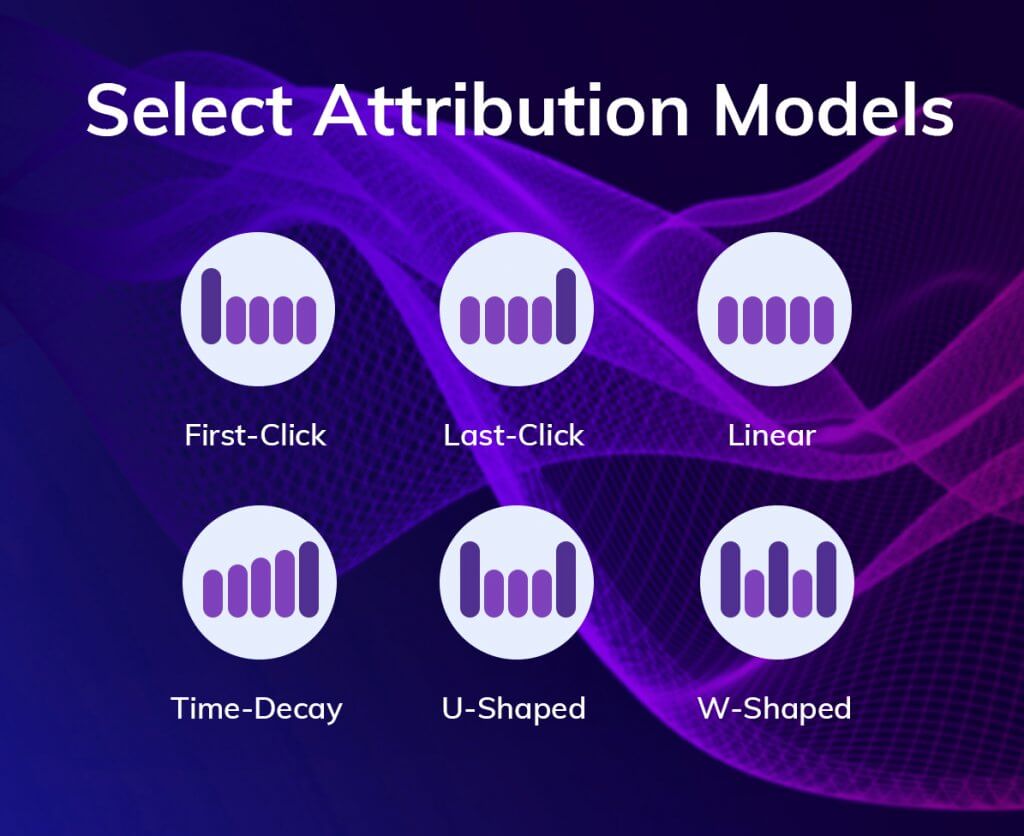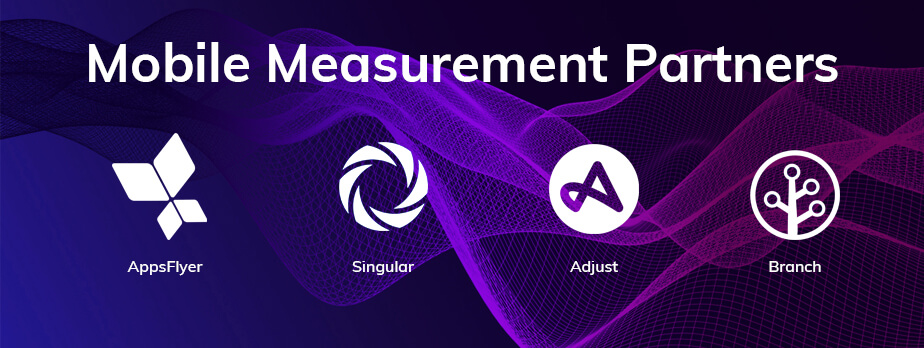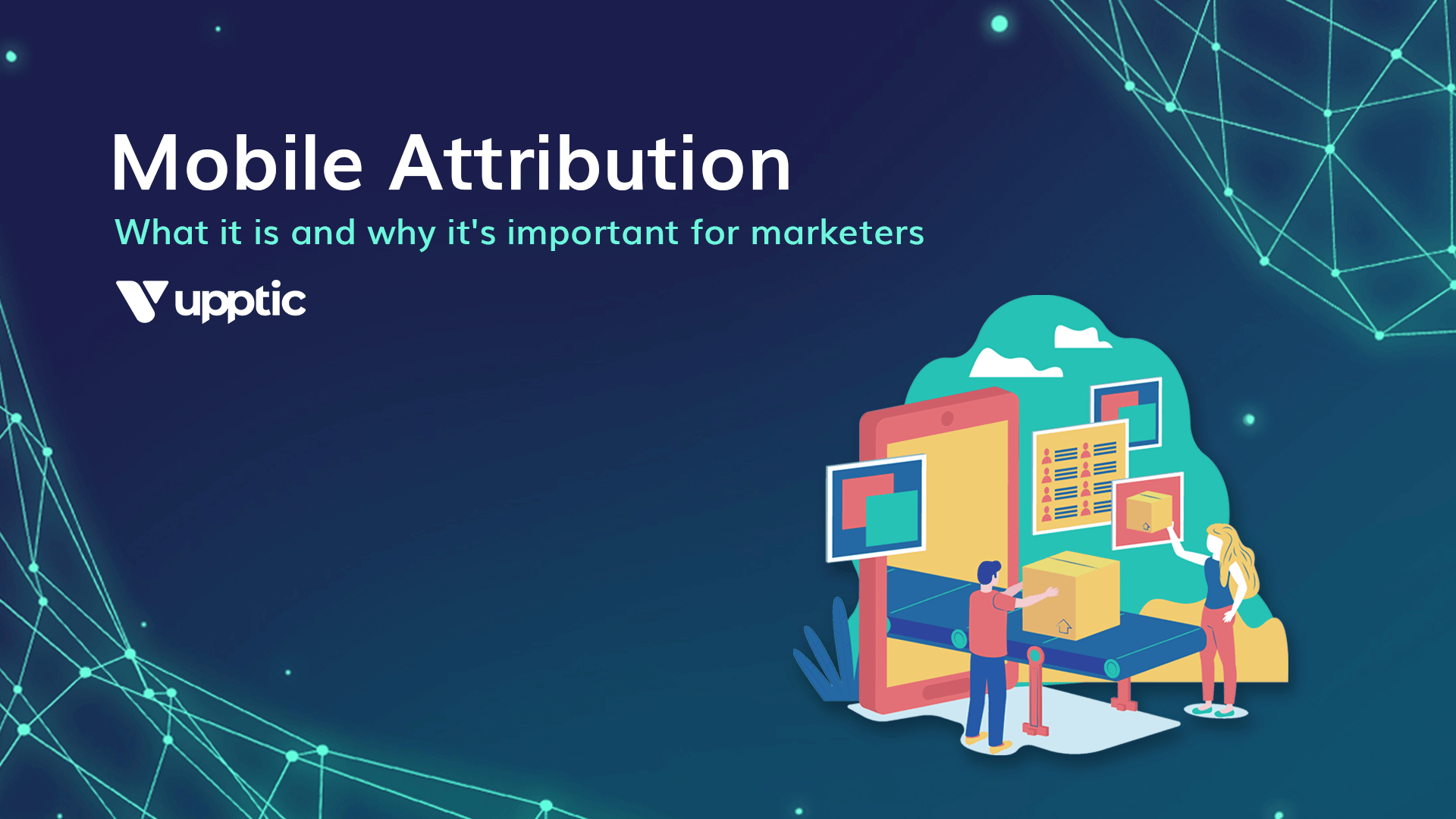What is mobile attribution?
Mobile attribution aims to identify the different marketing actions contributing to conversions. There are a variety of attribution methodologies, including first-touch, last-touch, and multi-touch. People use these to gather user data – building effective marketing campaigns through analytics.
This guide explores everything you need to know about mobile attribution, including why it is critical for marketing, how it works, and how to choose the best attribution model to ensure you get the most out of your marketing channel.
- Why is mobile attribution important?
- How does attribution work?
- Choosing an attribution model
- What happens when someone clicks an ad?
- Mobile measurement partners
- Attribution in the post-IDFA privacy era
- Key takeaways
Why is mobile attribution important important?
Attribution plays an integral part in helping marketers understand the efficacy of advertising campaigns. Full and proper attribution can identify and report whether a user reacts after seeing an advertisement, whether they install the app after seeing it, and how they behave after installing it. Attribution also helps reveal which marketing channels drive user acquisition the most and recognizes the marketing channels users interact with during their journey.
Moreover, mobile attribution is essential to optimizing funnels, campaigns, and the user experience. As it tracks user events and helps you understand user behavior when faced with paid activity, it ultimately allows you to improve all aspects of your app, ad spend, and creatives. Lastly, attribution will enable marketers to track their ROAS (return on ad spend) to ensure they’re spending money in the right places and gaining a high ROI (return on investment).
How does attribution work?
While web users can (currently) be easily tracked through cookies, mobile ecosystems have more limited tracking options. Fortunately, there are mobile attribution platforms that offer software development kits (SDKs) that developers can integrate into their apps. These mobile attribution platforms generate reports that provide initial data insights and information about unique users, different events, total marketing cost per channel, and total revenue.
There are many options to track mobile attribution, app publishers, and marketers. These can create clear-cut customer journey maps and help mobile developers acquire industry insights that translate into revenue. All mobile attribution models have their strengths and weaknesses. Here is a rundown of eight of these attribution models.

First-click attribution
First-click attribution records the first attribution data point – or touch – which allows the marketer to see where the user came from. For example, if the prospect clicks on an ad through social media, the first click mobile attribution will inform the marketer that the user entered the e-store via the ad. Thus, the app tracking attribution helps developers understand which channels drive user acquisition most.
Last-click attribution
Contrary to first-click attribution, last-click attribution tracks the last ad users click on before installation. However, the problem with the last-click method is that it doesn’t always provide accurate attribution. For example, if an email campaign prompts a buying decision, but the user clicks on an AdWord ad, the marketing attribution automatically goes to AdWord and not your campaign. That said, last-click works best if you need insights into the action that drove the installation.
Multi-touch attribution
Multi-touch attribution gives the marketer a complete picture of the consumer journey by laying out equal credit values for each step. Instead of just one advertisement, it recognizes users’ interactions with advertising channels throughout their journey. Two common types of multi-touch attribution include linear attribution and time-decay attribution, which will be explained in the following two sections.
Linear attribution
Linear attribution is a multi-touch attribution method that allows marketers to assign equal value to every interaction a brand has with a user or customer, whether big or small. However, this leaves marketers unable to identify which channels are most successful and least successful, as it doesn’t specify the varying impacts of the different marketing channels.
Time-decay attribution
Time-decay attribution – also a type of multi-touch attribution – allows marketers to assign increasing value to more recent touches while less weight is given to earlier touches. This will enable advertisers to focus on high conversion-driving touch points, which often influence decision-making.
View-through attribution
Much like the term suggests, view-through attribution allows marketers to measure conversions that have a gap between when users have viewed the ad without actually clicking on it but eventually take action later. This will enable advertisers to understand which impressions influence installs, providing further insights on channel performance beyond a click interaction, ultimately enabling them to allocate their budgets more carefully for optimal effectiveness.
U-shaped attribution
U-shaped attribution allows credits to diverge between different touchpoints. For instance, the first and last touch is credited at 40%, while the remaining 20% rate is split evenly among the middle points. The first and last touchpoints in many campaigns are the most significant. This makes the U-shaped model useful for those interested in seeing essential information about the customer journey.
W-shaped attribution
W-shaped attribution is quite similar to the U-Shaped mobile app attribution, except that it gives the first touch, lead stage, and last touch a 30% credit rate. The leftover 10% are distributed among other touchpoints. This helps shift attention to the essential channels, such as where the audience came from, what middle stage turned into a lead, and what last touch made them take action. However, this model works best for long-term campaigns and is not ideal for B2C mobile marketing with short-cycle user journeys.
Choosing an attribution model
In light of the different options, choosing the type of attribution model that meets your marketing needs is essential.
Firstly, you will need to weigh the pros and cons of each attribution model by asking yourself what marketing goals you want to achieve. In most cases, you would like your marketing campaign to generate leads, drive conversion, and create strong brand awareness. A clear understanding of these goals will reveal which data points and sections of the funnel you should focus on and which channels to leverage.
Finally, consider which models are popular. For B2C mobile marketing, last-touch attribution is generally the most popular attribution method because you’re paying for the last touchpoint right before an install.
What happens when someone clicks on an ad
Once you’ve chosen an attribution model that you can benefit from, it’s essential to understand the process of mobile app attribution in the marketing funnel. In its most basic form, it essentially starts with the user clicking on an ad and eventually installing the app. The attribution SDK will launch once the user opens the app, and the attribution tool will collect the data.
However, the problem is that user clicks are difficult to track once they’re in the app store environment. Partners track user clicks using unique identifiers and device fingerprinting to counter this. The platform measures these clicks and impressions through a mobile attribution tool. It then calculates the installation and records it. This data gets queued for processing before gaining attribution. The platform will then report this and store it in the click-and-install records.
Tracking methodologies
As mentioned before, the user journey can become opaque once they enter an app store environment. It can be hard to determine who was responsible for a free app install or a paid app purchase. That said, there is a popular methodology for attribution tracking known as device fingerprinting.
Device Fingerprinting
Device fingerprinting connects a user from click to app install by extracting basic and imperfectly unique information from device headers, such as the IP address. This works by sending a user to a tracking link and collecting the device’s publicly accessible HTTP headers. This data establishes a fingerprint of the tracking link click. After installation, the SDK collects data points and sends them to the platform. This allows it to generate the fingerprint from the install and track clicks with the matching fingerprint, with the last click attributing the install.
Attribution windows
An attribution window (a conversion window) is a set amount of time a publisher can claim that a click or impression resulted in an install. For instance, an advertiser may set an attribution window of seven days.
Attribution windows are an essential tool since there is usually a gap between seeing the ad and installation. This means that users could be mistaken as organic, causing ad inventory providers to lose out on money. Setting an attribution window makes it possible to include users who, while not really installing the app directly after seeing the ad, are technically brought in through it.
Mobile measurement partners
A mobile measurement partner, or MMP, is a platform provider that aids apps in evaluating the success of marketing campaigns across media platforms, ad networks, and advertising marketing channels. An MMP helps marketers to recognize which media source deserves credit for triggering a conversion because it is the only party with a neutral perspective of the entire consumer journey. This enables marketers to make well-informed budget allocation decisions.
Some of the top MMPs include Adjust, Branch, Singular, Appsflyer, and Kochava. Each mobile attribution service enables you to track first clicks, associate them with an install, and notify businesses about installs and events. Consider the size of your team, timeframes, and budget when deciding which MMP best meets your needs.

AppsFlyer
AppsFlyer touts its privacy-first approach to attribution and offers a measurement suite, SKAdNetwork solution, and cost aggregation solution. Its platform allows marketers to see conversions across the user journey and glean actionable insights for creating exceptional customer experiences. Best of all, anyone can try AppsFlyer for free for 30 days.
Singular
Singular houses a robust suite of tools – including mobile attribution solutions, marketing analytics, fraud prevention solutions, and ad monetization analysis. It also offers automation of data standardization and cost-and-ROI reporting. They offer a free trial with no credit card required.
Adjust
Adjust gives its users the ability to measure performance across the user journey, analyze and optimize marketing strategies with customized visualizations and reports, automate campaign optimization, and protect user data as well as prevent fraud. Marketers can try them out for free before needing to make a commitment.
Branch
Branch offers several tools as an MMP – including an engagement builder, SKAN support, fraud protection, and cost aggregation. They also have a “SafeTrack” feature, which helps remove the burden of privacy compliance from marketers. Marketers can get started for free for up to 10,000 MAU.
PC Attribution
Attribution for PC games has traditionally been overlooked by games marketers, historically biasing towards brand spend instead of performance marketing. However, recent technological advancements by measurement partners such as Gamesight have unlocked the gaming market in recent years. Like other measurement partners, Gamesight’s platform integrates marketing data to create a holistic view of marketing performance – allowing PC game marketers to make data-driven decisions on budget allocation, channels, and more.
Attribution in the post-IDFA privacy era
The mobile marketing sector has also experienced a rocky few years. With their privacy project, App Tracking Transparency (ATT), and its accompanying SKAdNetwork, Apple has continued to modify how users and ads are monitored on iOS. The company sharply reduced the information available to mobile attribution platforms with the release of iOS 14.5 in April 2021. Because iOS is one of the most popular mobile platforms, this shift has influenced many enterprises worldwide.
Apple informed app developers that “fingerprinting,” a probabilistic attribution mechanism, is prohibited unless users give specific authorization. This has made compliant attribution much more difficult for marketers. However, the future attribution mechanism on iOS will be powered, at least partially, by SKAdNetwork, a privacy-preserving deterministic architecture for mobile app install attribution. Let’s take a closer look at what this means.
SKAdNetwork 4.0
SKAdNetwork 4.0 (SKAN 4.0) is Apple’s way of giving marketers a means to measure app install campaign conversion rates without jeopardizing user privacy. However, ATT, and SKAN have wreaked havoc on the mobile marketing industry.
Nonetheless, anyone who wishes to work with Apple iOS must follow their rules. As a result, the emphasis has switched from just collecting data to obtaining permission from consumers to collect data.
Certain businesses, such as Upptic, have developed unique analytics platforms which combine the most reliable signals from SKAN, with the most reliable signals from deterministic and probabilistic data to give a holistic picture of iOS marketing performance.
Google & Android
While Apple attribution issues continue, Google is attempting to take similar action with its Android operating system and Chrome browser. However, Google has approached the issue of privacy changes in a way that is much less disruptive to the marketing industry.
Google has already revealed its plans to phase out third-party cookies – but has pushed this back numerous times in order to better help marketers prepare for these changes. Currently third-party cookies are set to phase out in 2024.
After third-party cookies representing mobile ad attribution roles expire, Google will no longer depend on user-based identification. As an alternative, they will use their new FLoC (federated learning of cohorts) technology to accomplish cohort targeting.
In addition, Google updated their Google Play services in late 2021, announcing that the Android Advertising ID (AAID) will be erased when a user opts out of personalisation using advertising ID in Android Settings. Any efforts to retrieve the identification will result in a string of zeros rather than the identifier itself.
Additionally, the Google Privacy Sandbox has just gone into beta-testing – meaning further changes will be on the way sooner rather than later for Android marketers.
Key takeaways
Mobile attribution is one of the major tools to ensure marketers can create effective marketing strategies inside a multi-billion-dollar market. And while ongoing changes from industry leaders have disrupted the normal flow of things – innovative industry experts are already providing useful solutions.

